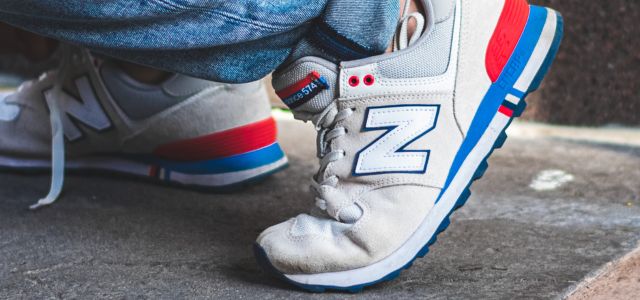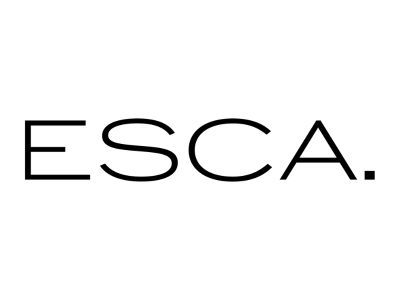Footwear company New Balance recently sued Golden Goose for trademark infringement with respect to its “Dad-Star” sneaker.[1] The complaint alleges that Golden Goose willfully infringed on the common law trade dress rights New Balance has established in its 990 sneakers. New Balance asserts one federal claim for false designation of origin and two Massachusetts state law claims for trademark infringement and statutory dilution.[2]
New Balance first released its 990 sneakers in 1982.[3] Its innovative technology and unique design made it the first sneaker to cost over $100. New Balance claims the 990 and its distinct grey colorway quickly became synonymous with the brand. It now sells six different variations of the sneaker which all maintain a continuous design language that conveys a distinctive “look.”[4] The company claims that the repeating design elements are not functional and primarily serve to identify New Balance as the source of the 990 sneaker.[5] The brand continues to associate itself with the color grey through its annual “Grey Day” promotional event and the dedicated “Grey Shop” on its website.[6] It has also embraced its status as the “‘original’ dad shoe” through various global marketing campaigns, including one advertisement that claims the 990 sneaker is “[w]orn by supermodels in London and dads in Ohio.”[7]
In October 2021, Golden Goose began selling its Dad-Star sneaker which, like the 990, has a chunky design and grey color scheme.[8] The style name also seemingly references the “dad shoe” trend, purportedly inspired by the New Balance 990.[9] New Balance claims that Golden Goose’s use of confusingly similar design elements, style name, and grey colorway infringes on the 990 trade dress and will irreparably harm New Balance’s well-established goodwill.
New Balance specifically claims protectable rights to the following combination of elements: “(i) Upper composed primarily of multiple tones of a single color (usually grey, blue, or black); (ii) Upper including mesh underlay with suede overlay creating mesh windows in forefoot and midfoot; (iii) Overlay bars in lateral and medial forefoot regions; (iv) Midsole having forefoot-to-midfoot portion of a first color (usually white) and different colored (usually grey) midfoot-to-heel portion; (v) Outsole of contrasting color (usually predominantly black); (vi) Reflective accents in upper; and (vii) Reinforced rear eyelets (usually two on both medial and lateral sides).”[10]
New Balance alleges that Golden Goose has a history of stealing the “creative work and goodwill of others” to create its own distressed styles.[11] It believes Golden Goose deliberately chose shades of grey and the “Dad-Star” name to create confusion in the minds of consumers by falsely associating its products with the New Balance brand.[12] The likelihood of consumer confusion is heightened because Golden Goose has previously participated in brand collaborations, so consumers may reasonably believe New Balanced authorized Golden Goose’s use of the 990 trade dress.[13] New Balance also notes that both companies advertise their products through similar channels, such as the Internet, social media, and fashion magazines, and sell their shoes at the same retail stores, like Saks Fifth Avenue and Nordstrom.[14] To support its likelihood of confusion claim, New Balance points to a number of social media posts that display evidence of actual consumer confusion as to the source of Golden Goose’s Dad-Star sneaker.[15]
New Balance is asking the court to enjoin Golden Goose from using its protected 990 trade dress and for an order to recall and destroy all Golden Goose products bearing the 990 trade dress.[16] It also seeks an accounting of profits by Golden Goose and monetary damages.[17]
Take Aways
The case demonstrates the importance of brands protecting and enforcing their designs via trade dress. Although it is typically an uphill battle to prove acquired distinctiveness before the USPTO, even without registration, brands are able to fight knockoffs to protect the goodwill they built in the market as demonstrated by New Balance’s efforts. It also should make companies aware that if they attempt to straddle the line and get close to a design while trying to avoid infringement, there is always a chance a brand will invest in enforcement and fighting to protect its goodwill and market share.
[1] New Balance Athletics, Inc. v. Golden Goose USA, Inc., 1:23-cv-11898, (D. Mass. Aug 18, 2023).
[2] Id. at 26-30.
[3] Id. at 6.
[4] Id. at 10.
[5] Id. at 10, 12.
[6] Id. at 3.
[7] Id. at 3.
[8] Id. at 20, 21.
[9] Id. at 18.
[10] Id. at 12.
[11] Id. at 4.
[12] Id. at 21.
[13] Id. at 24.
[14] Id. at 24.
[15] Id. at 22-25.
[16] Id. at 30-31.
[17] Id. at 31.

Written by Francesca Witzburg
Founder & Owner. ESCA Legal

Written by Cassidy Moon
Intern at ESCA Legal and 3L at Cardozo Law
You may also like…
Tesla v. Tesla Power India: Tesla files lawsuit in Delhi High Court
The world of trademarks is a crucial battleground for businesses, especially in a globalized market. Strong trademarks...
Neuroscience nugget for Mental Health Awareness Week: moving with awareness
We all know that being active is important for our physical and mental health. However, I am going to look beyond the...
“X” in a million-dollar copyright dispute: a recent win but a long way to go
Last summer, several publishers, including Universal Music Corp., Sony Music Publishing, all members of the trade...
Contact us to write for out Newsletter














